.
Mission: Third Shuttle Mission/Office of Space Science-1(OSS-1)
Space Shuttle: Columbia
Launch Pad: 39A
Launched: March 22, 1982 at 11:00:00 a.m. EST
Launch Weight: 235,415 pounds
Landing Site: White Sands, New Mexico
Landing: March 30, 1982 at 9:04:46 a.m. MST
Runway: 17 - Northrup Strip
Rollout Distance: 13,732 feet
Rollout Time: 83 seconds
Revolution: 130
Mission Duration: 8 days, 0 hours, 4 minutes and 46 seconds
Returned to KSC: April 6, 1982
Orbit Altitude: 147 nautical miles
Orbit Inclination: 38.0 degrees
Miles Traveled: 3.335 million
Crew Members

Image above: STS-3 Crew photo with Commander Jack R. Lousma Pilot C. Gordon Fullerton. Back-up crew members for this mission were, Thomas K. Mattingly II and Henry W. Hartsfield, Jr. Image Credit: NASA
Mission Objectives Demonstrate safe re-launch and safe return of the orbiter and crew. Verify the combined performance of the entire shuttle vehicle - orbiter, solid rocket boosters and external tank.
Demonstrate safe re-launch and safe return of the orbiter and crew. Verify the combined performance of the entire shuttle vehicle - orbiter, solid rocket boosters and external tank.
Payloads included the 8,740 lbs. Office of Space Science (OSS-1) Pallet consisting of the Plant Lignification Experiment, the Plasma Diagnostic Package (PDP), the Vehicle Charging and Potential (VCAP) experiment, the Space Shuttle Induced Atmosphere experiment, the Thermal Canister experiment, the Solar Flare X-Ray Polarimeter, the Solar Ultraviolet and Spectral Irradiance Monitor (SUSIM), the Contamination Monitor Package and the Foil Microabrasion Package. Also in the payload bay was the 11,048 lbs. Development Flight Instrumentation (DFI) Pallet and the 448 lbs. Aerodynamic Coefficient Identification Package (ACIP).
The crew compartment housed the Monodisperse Latex Reactor (MLR) experiment and the Heflex Bioengineering Test (HBT) experiment.
Mission Highlights
The launch was delayed one hour due to failure of a heater on the nitrogen gas ground support line.
Testing continued of space shuttle systems for qualification for operational flights. Testing of remote manipulator system and measurements of thermal response of orbiter in various attitudes to sun conducted. Get Away Special test canister and Spacelab pallet-mounted experiments for NASA's Office of Space Science-1 (OSS-1) carried in payload bay. OSS-1 obtained data on near-Earth space environment, including contamination (gases, dust, etc.) introduced into space by orbiter itself. Other experiments: Monodisperse Latex Reactor (MLR), Electrophoresis Equipment Verification Test (EEVT), Heflex Bioengineering Test (HBT) and first Shuttle Student Involvement Program (SSIP) experiment. Problems encountered: space sickness, malfunctioning toilet, thermostat difficulty and unexplained static interfering with crew sleep. Auxiliary power unit registered overheating during ascent, but functioned properly during descent. Three communications links were lost.

With Space Shuttle Columbia mounted firmly atop, NASA's modified Boeing 747 Shuttle Carrier Aircraft 905 kicks up clouds of gypsum dust as it lifts off Northrup Strip at White Sands Missile Range in New Mexico on April 6, 1982 to ferry Columbia back to the Kennedy Space Center in Florida. Crewed by NASA astronauts Jack Lousma and Gordon Fullerton on its third orbital test mission, Columbia had been diverted from its planned landing at Edwards Air Force Base in Southern California due to bad weather the previous week having left Edwards' lakebed runways too soggy to support a shuttle landing. It was the only space shuttle landing to occur at White Sands over the course of the 30-year, 135-mission shuttle program.
-
Frams von Start und Landung von STS-3 NASA-Video:





White Sands




Vorbereitungen für Landung von Columbia in White Sands
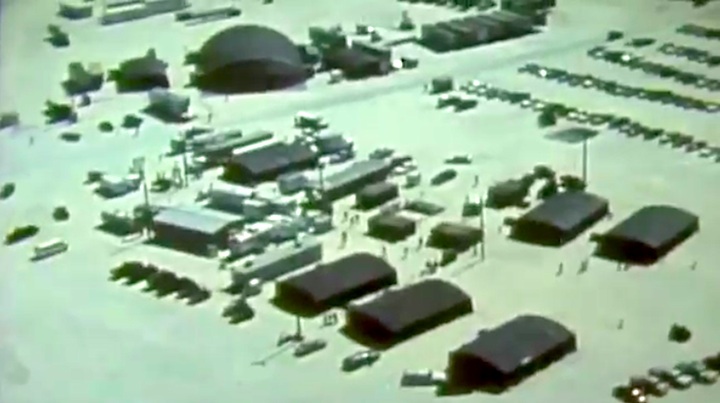











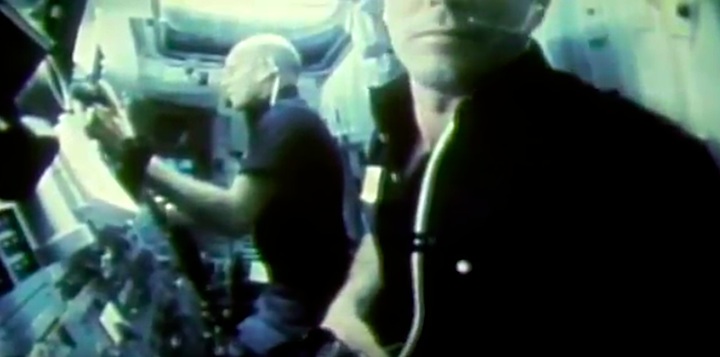








Shuttle-Glühen zum ersten Male...














Anflug von Columbia auf White Sands

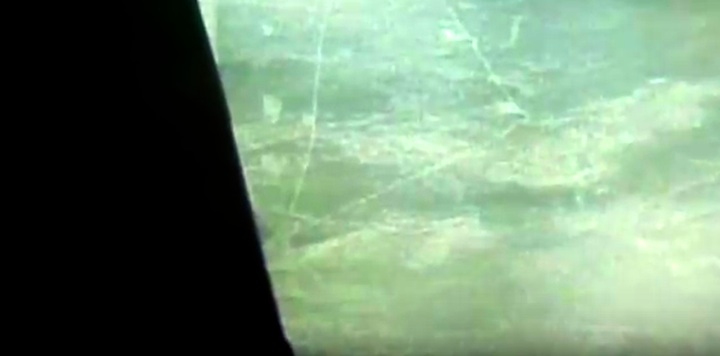








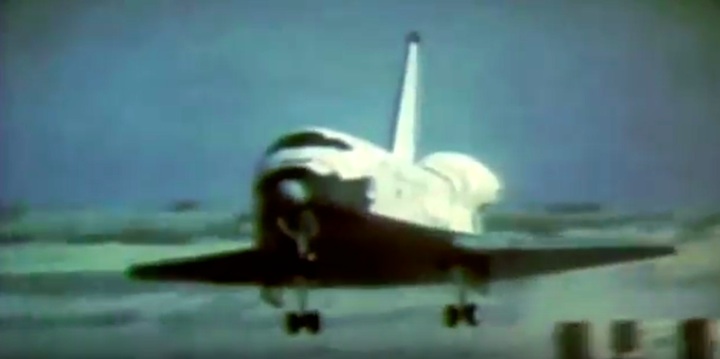











"Bessere Ankunft als zukünftige SplashDown-Rückkehr..."


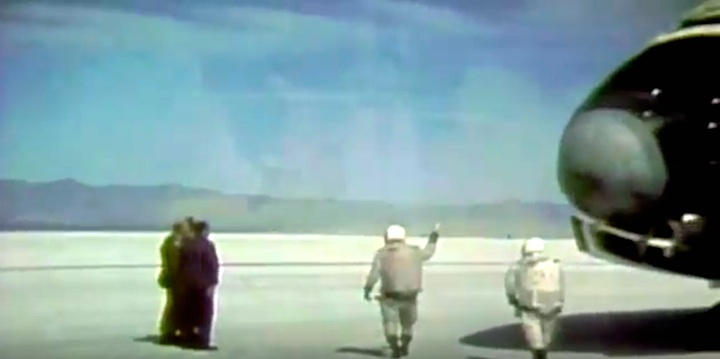
Quelle: NASA
